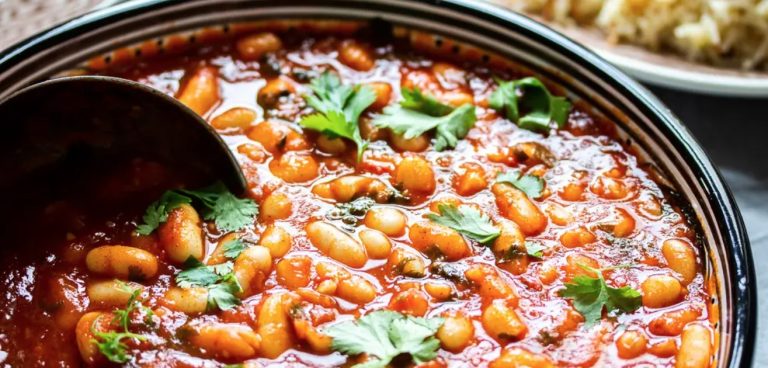Ful Medames is an Arabic bean stew that you can prepare quickly and easily. You can find out how it works and what it tastes best with here.
Ful Medames – or Ful for short – originally comes from Egypt and is eaten in a modified form for breakfast in many countries in the Arab world. Fava beans serve as the basis. They have numerous other names such as broad beans, field beans, pork beans or broad beans.
We show you a typical Egyptian recipe for one person.

Note: It is best to soak the dried beans in a bowl of plenty of water overnight or for at least eight hours. This allows them to soak up water and take less time to cook. You can also buy canned fava beans cooked, saving you time. However, dried beans require less packaging and are therefore the more sustainable alternative.
Ingredients:
100g dried fava beans (equivalent to about 250g cooked beans)
1 onion (red or white)
2 clove(s) garlic
1green chili
1 tbsp olive oil
2 tbsp tomato paste
2 teaspoons cumin
150 ml bean water
lemon juice
Parsely
as a side dish: Arabic flatbread
Directions:
It is best to soak the beans the day before as described above.
The next day, drain the water and rinse the beans thoroughly.
Cook the beans in three times their volume of water over medium-low heat for about 50 minutes. Do not cover the pot to prevent the water from overflowing as it cooks. About ten minutes before the beans are done, add a teaspoon of salt. When you drain the beans, be sure to save the bean water as you will need it later.
Finely chop the onion, garlic and chili.
Start by adding the onion and chili to a hot pan and sweating over medium-low heat, stirring frequently. Add the garlic a little later as it burns faster.
After about three minutes, you can add tomato paste and cumin and sauté for a few minutes. Certain spices, including cumin, develop their full aroma only when they are roasted.
Add the cooked beans and douse with the bean water. Season the ful with a little salt and let it simmer over low heat for about 20 minutes.

Now mash part of the ful with a potato masher or a fork so that it gets the consistency you want. Alternatively, you can also use a hand blender and puree the ful. To do this, pour the ful into a container that is suitable for pureeing.
When serving, you can drip some lemon juice over the ful and garnish with parsley.
By the way: The ful keeps in the fridge in an airtight container for about three days.


